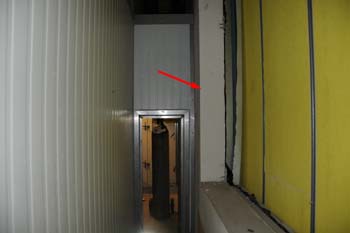A large hospital addition in the Toronto area was adjoined to one of the existing exterior walls of the original building. A void of approximately 12 inches was left between the existing wall of the old building and the new wall of the addition. The existing building housed a mechanical room along the subject exterior wall. A louver in the exterior wall had served as the fresh-air intake to the air-handling unit. When the addition was built, the new wall would have blocked the intake louver, so the fresh-air path to the air-handling unit was ducted to a gravity ventilator on the roof.

During a period of low temperatures, cold air entered the building through the rooftop gravity ventilator. The cold air travelled into the wall cavity between the existing building and the addition via the opening in the existing wall where the fresh-air intake louver formerly resided. The cold air froze a 2” fire-sprinkler pipe running within the wall cavity to a fire-hose box in the corridor of the addition. The pipe freeze caused flooding and damage to the hospital addition.


